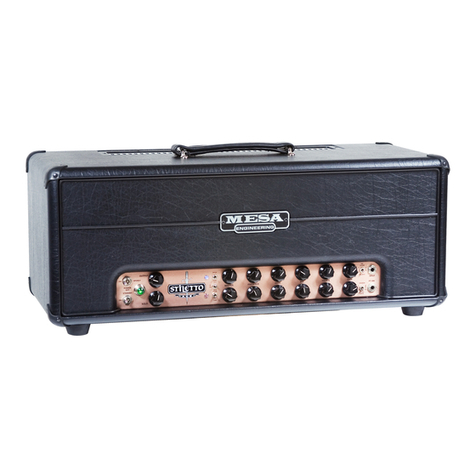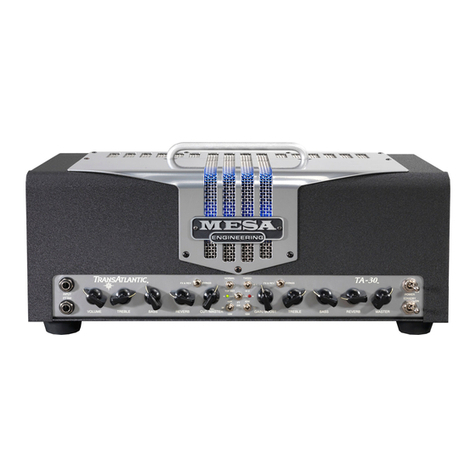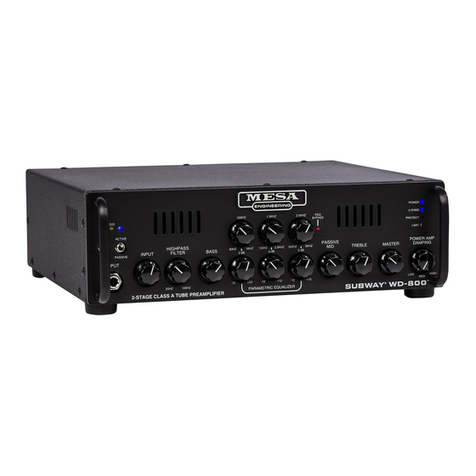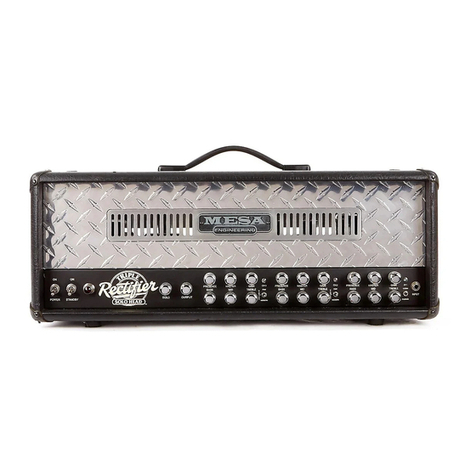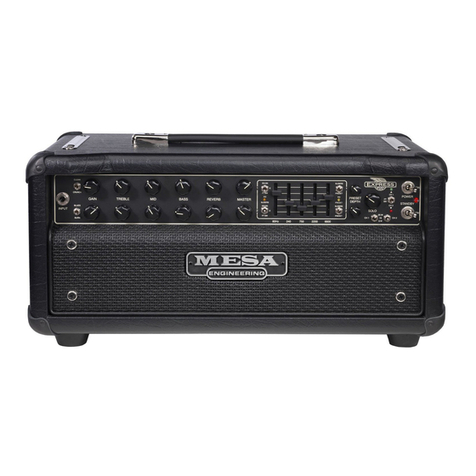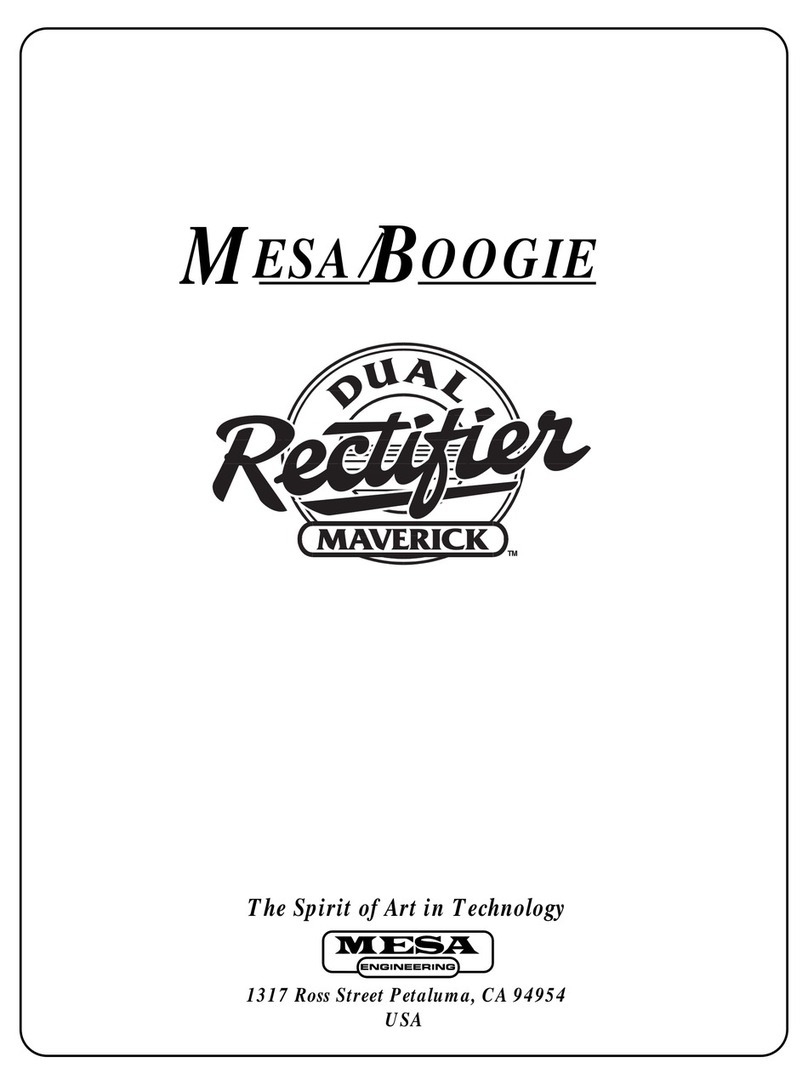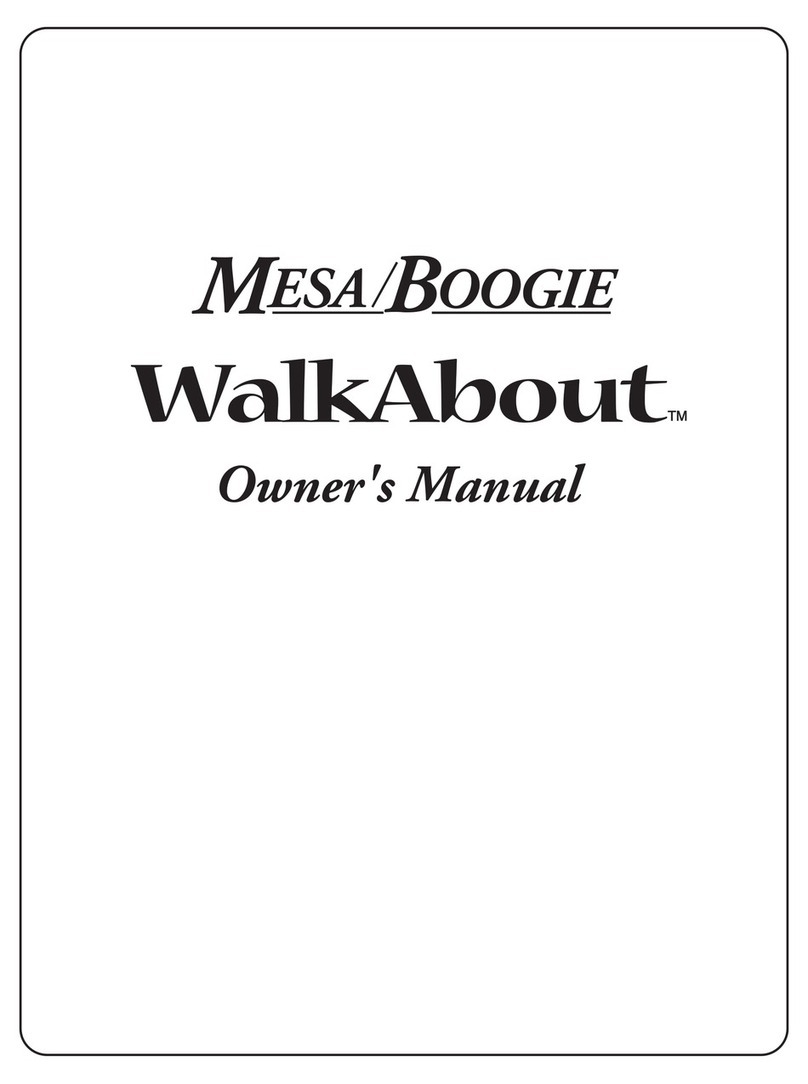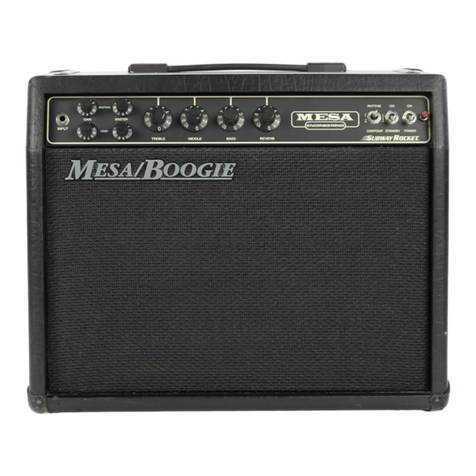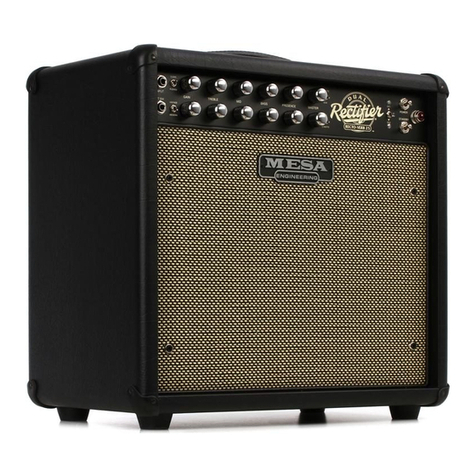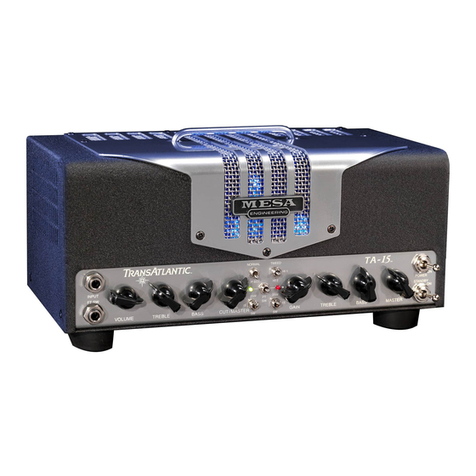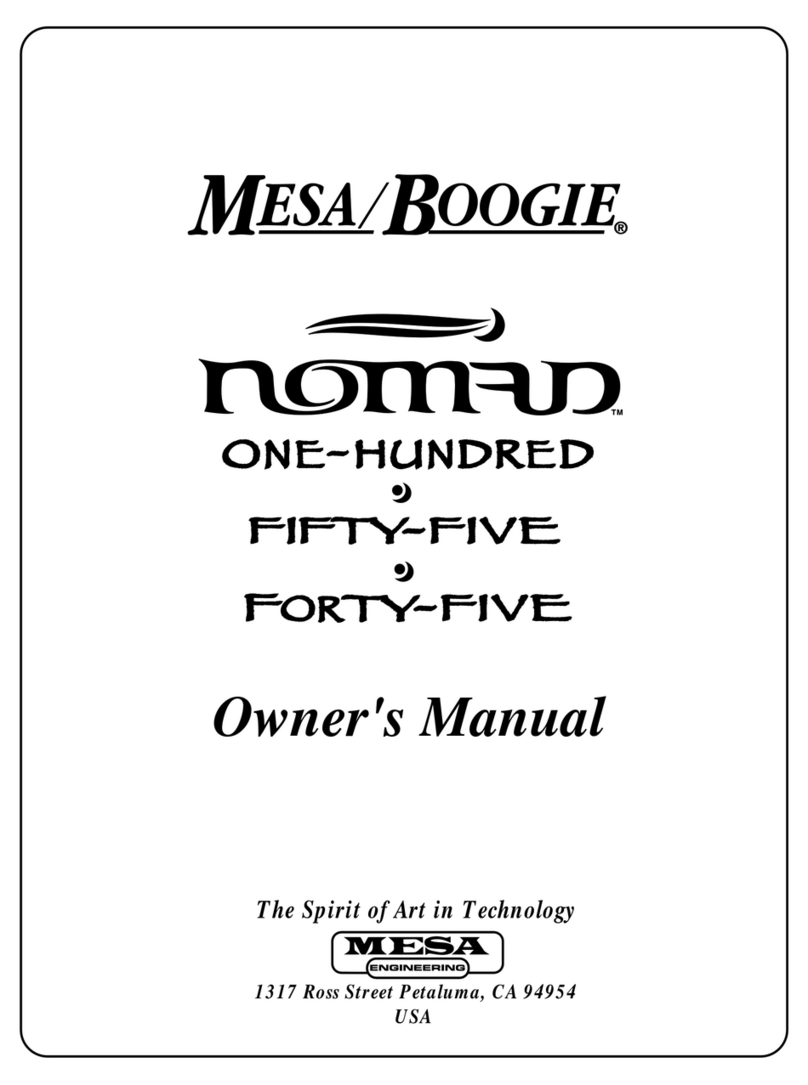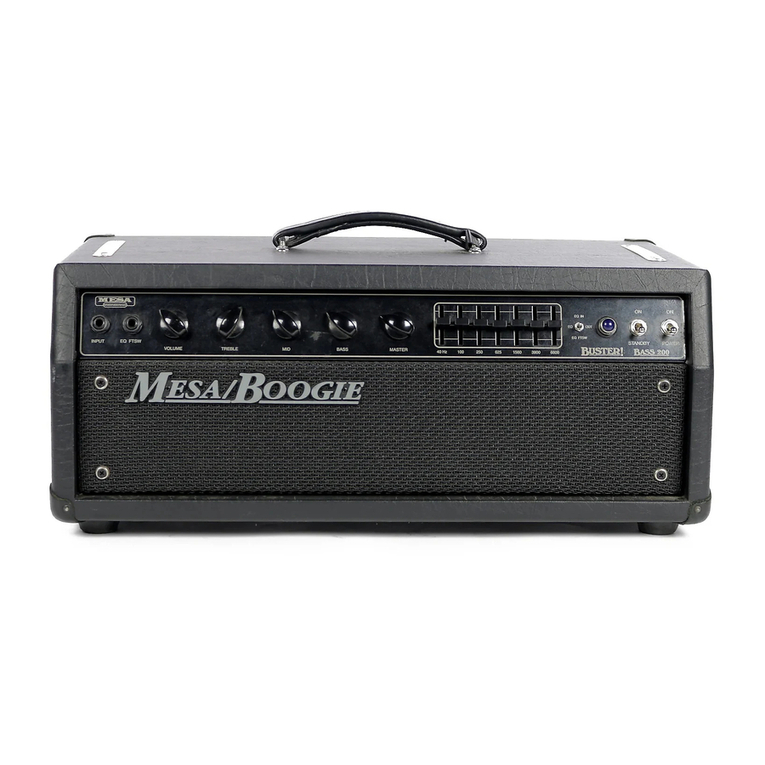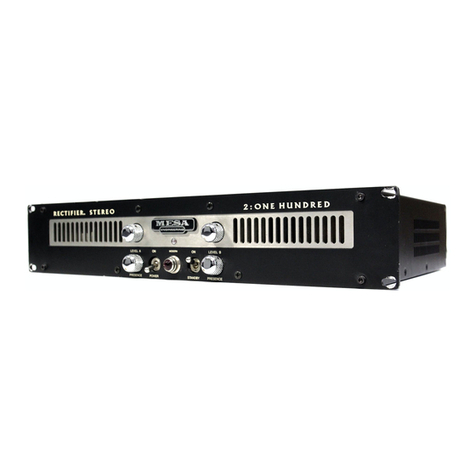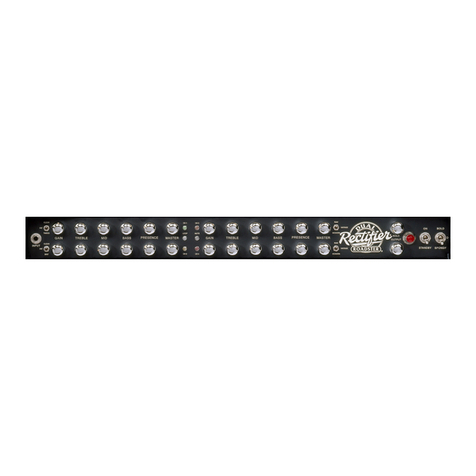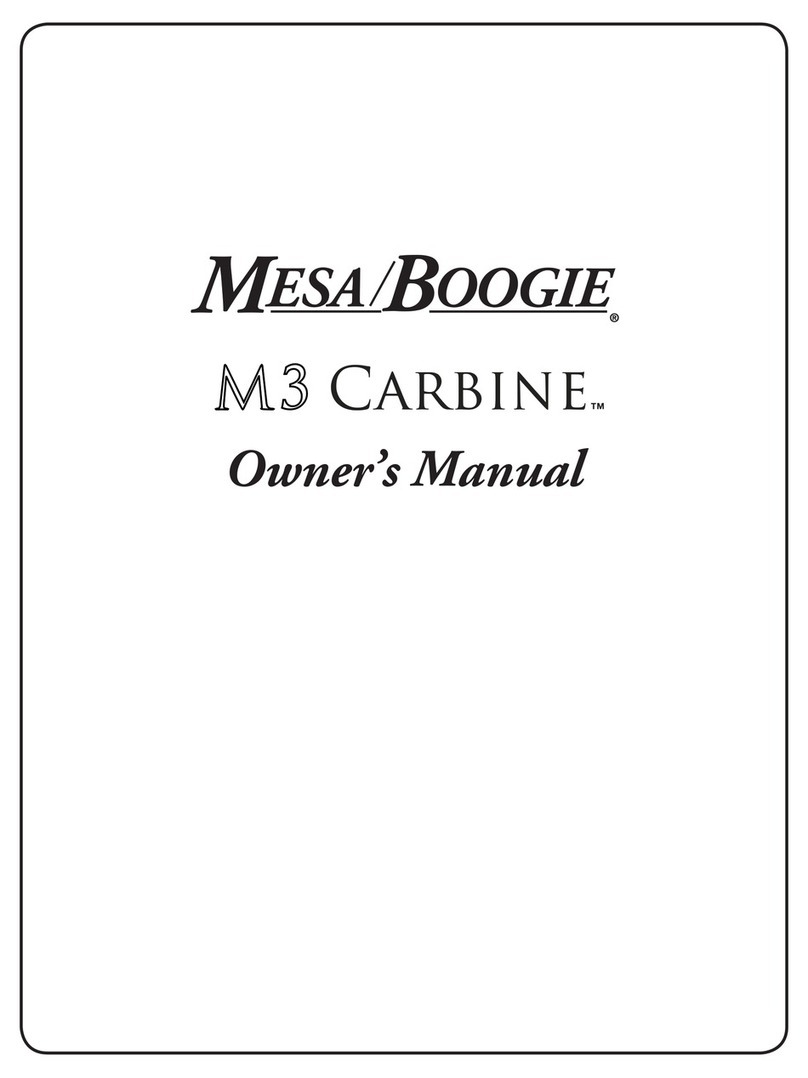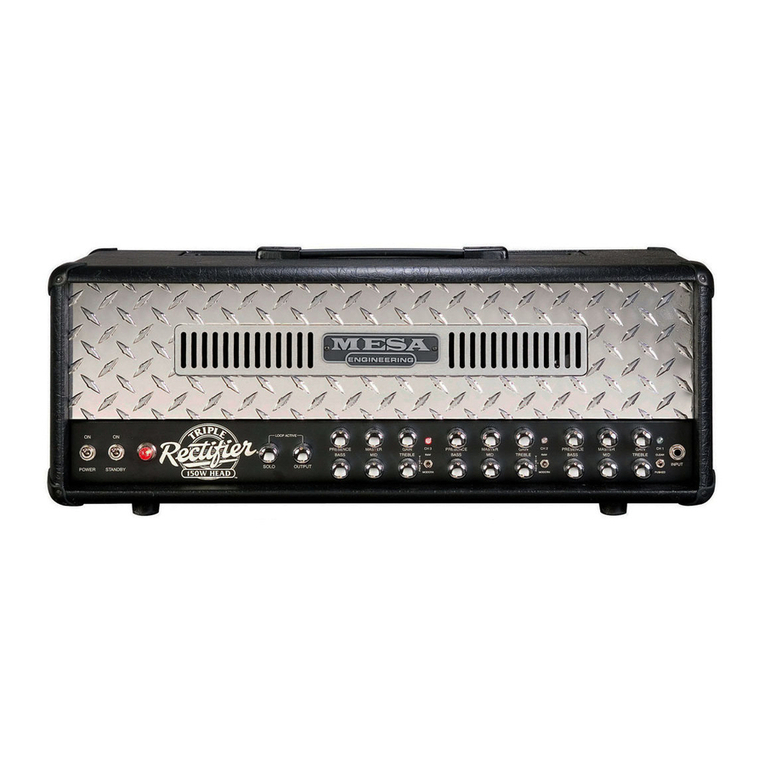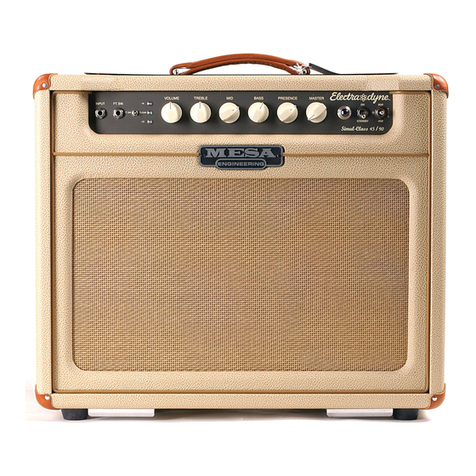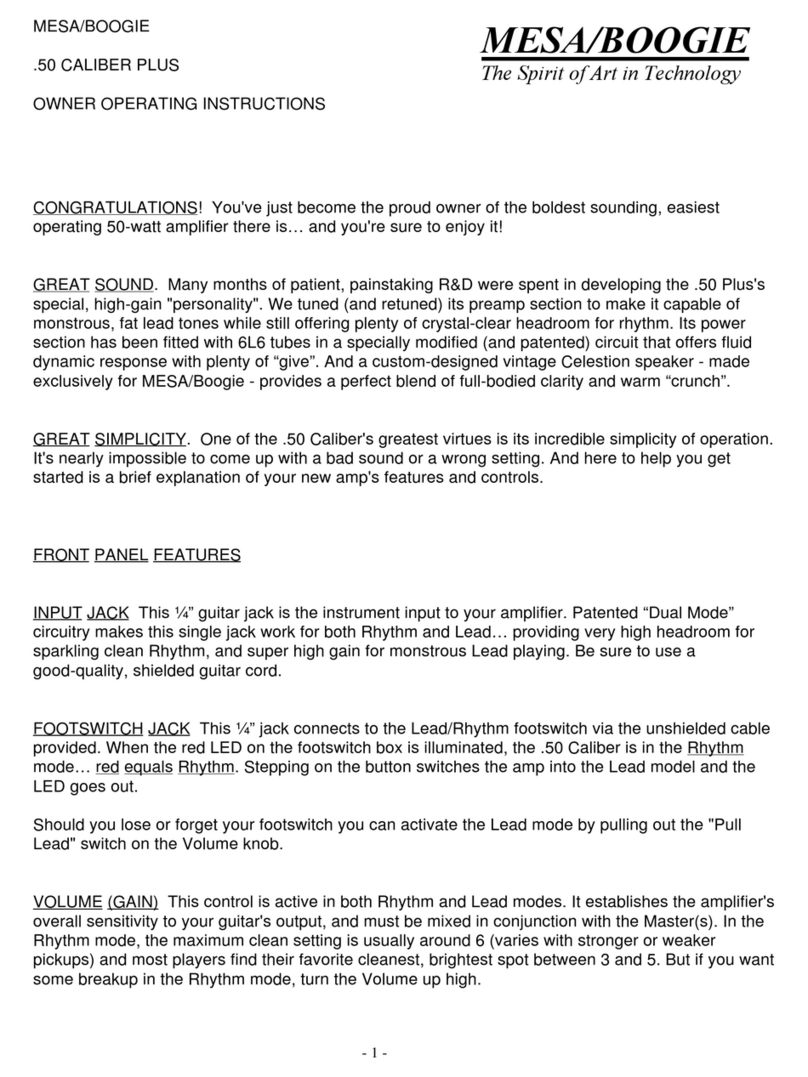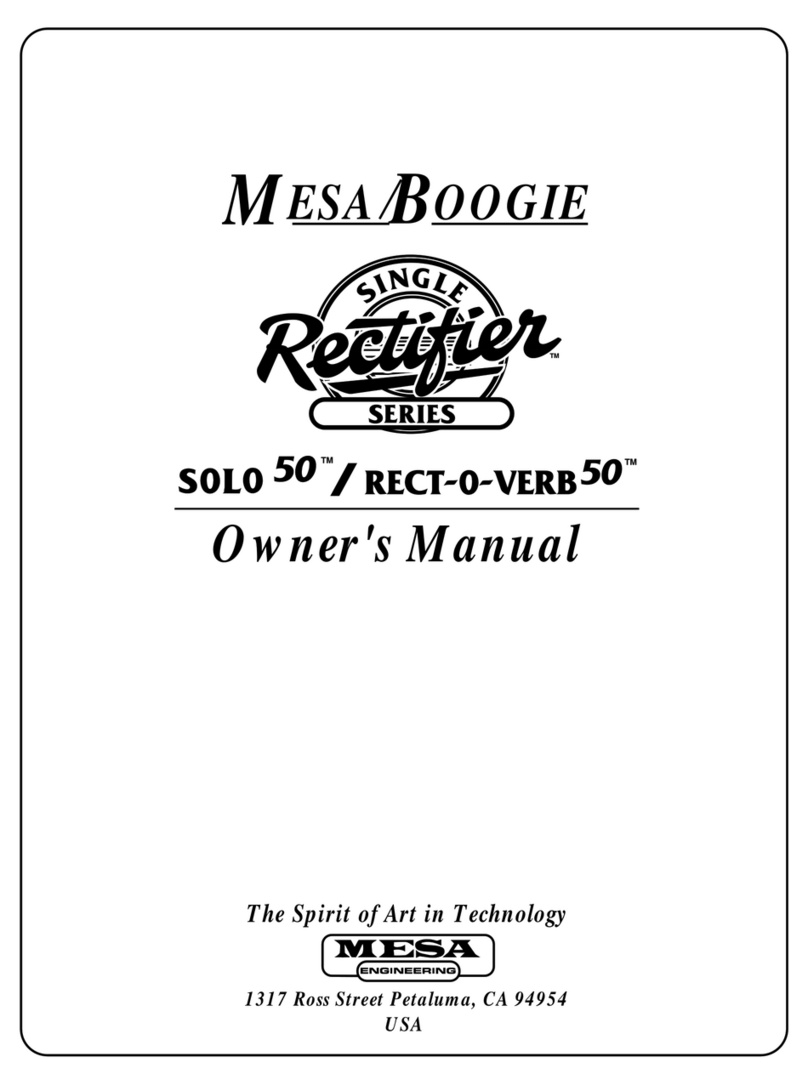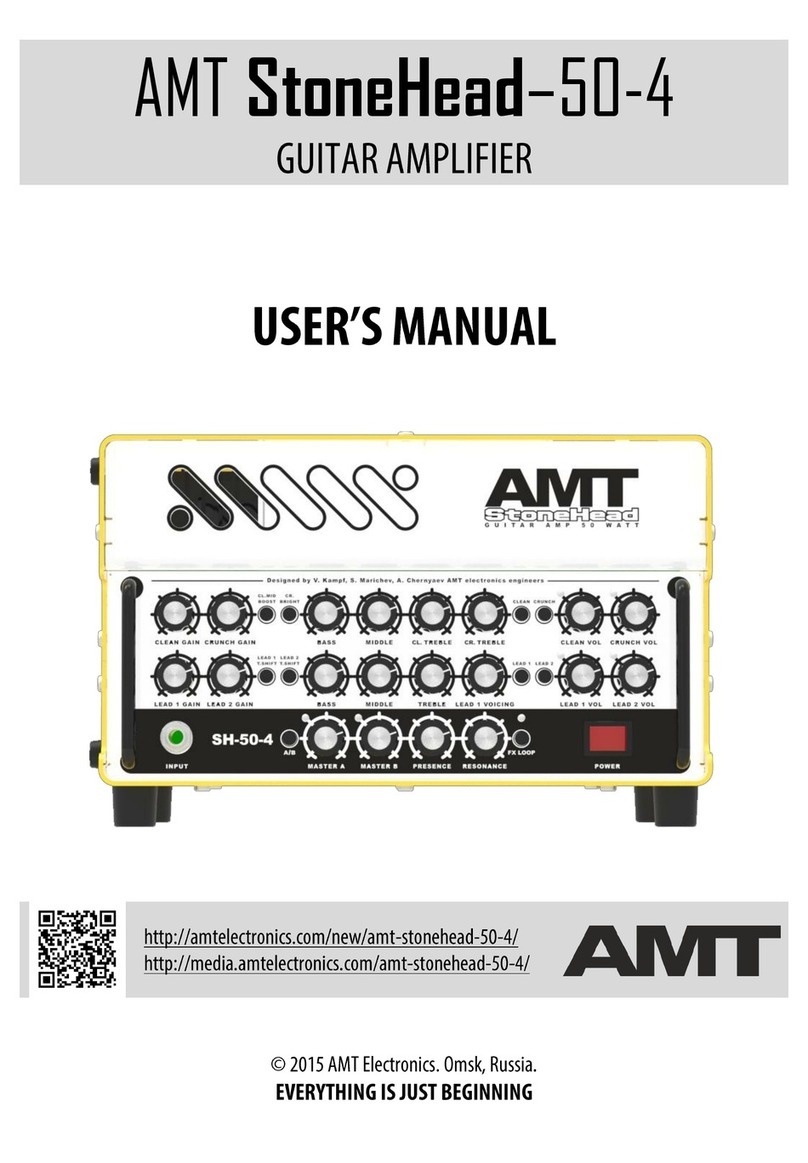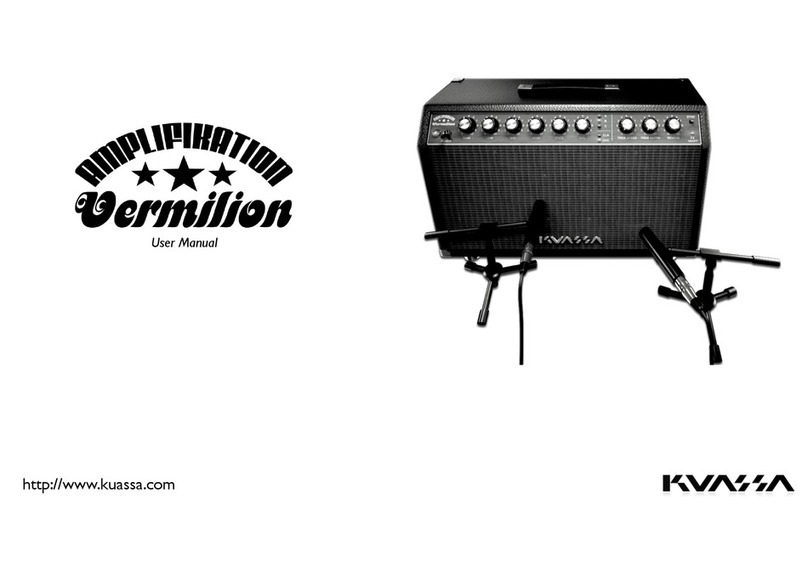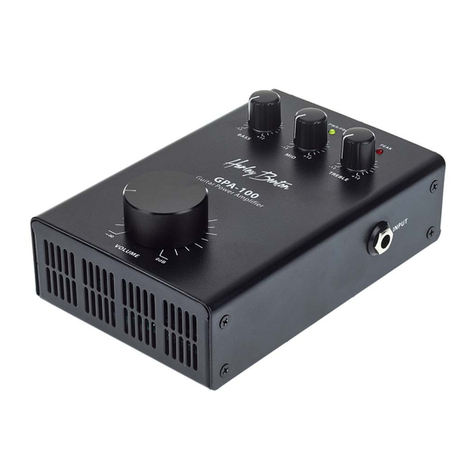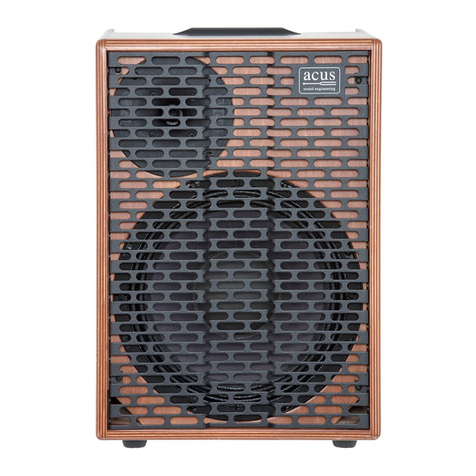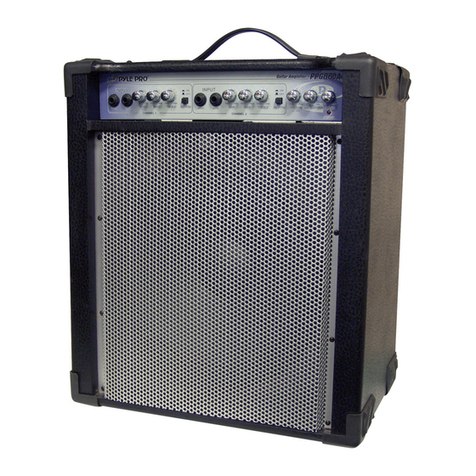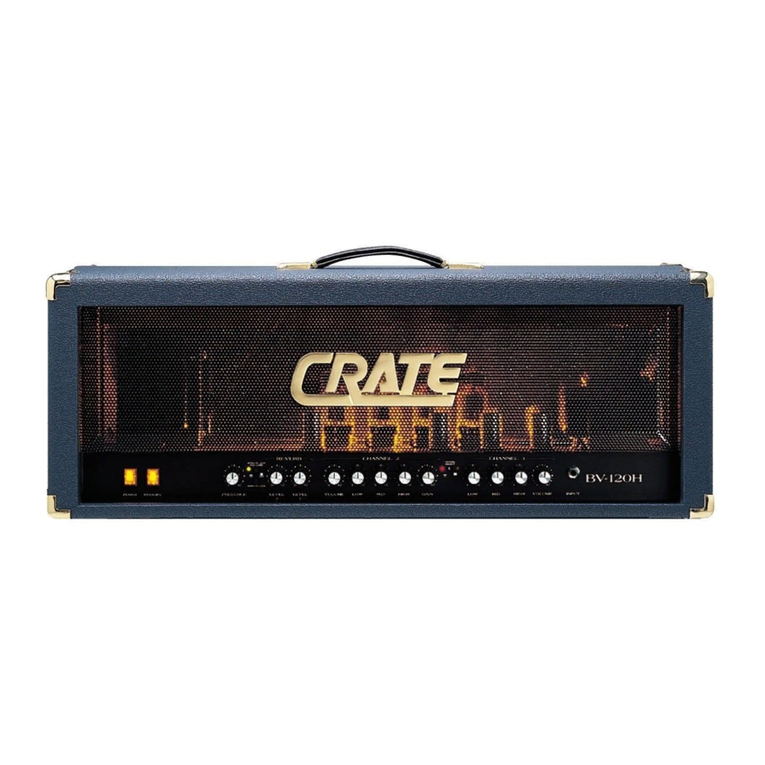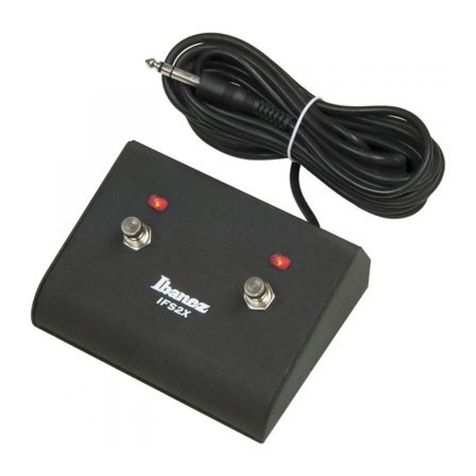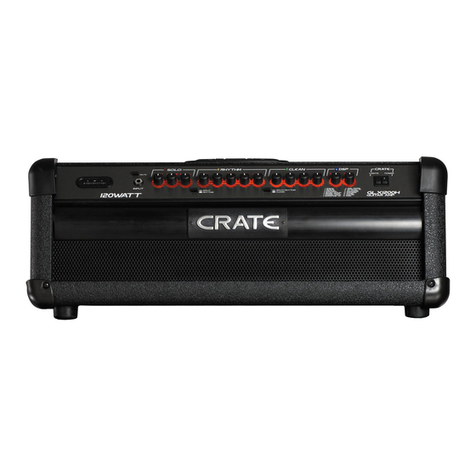
MASTER:
A simple control found on most amps today, these serve to balance the playing level of the two channels. They
enable the pre-amps GAIN Control to be used in a wide range of settings, while never having to affect the listening level. On both the
DUAL and TRIPLE RECTIFIER Solo Heads these Masters serve another purpose as well. When the FX Loop is switched out
of Bypass and programmed to either channel specifically or, simply On all the
time, these MASTER Controls double as FX Loop Send Level Controls.
This is not their primary function, but the setting here does affect the channel’s
Send strength. This is not a problem because both the DUAL and TRIPLE
RECTIFIER’S Solo Heads loop also incorporates a Master Send Level Control
that compensates for the possible level mismatch when using the Masters to balance
the channels. We have found the middle ranges through to be very well behaved
for most effects. Setting the Masters in this region should make for trouble free FX
interfacing when using the loop.
LOOP ACTIVE MASTER:
This knob of a different color, works in conjunction with the FX Loop Select Rotary Control that is
found on the Rear Panel in the FX Loop section of the amplifier. When the Loop is switched out of Bypass the Yellow Loop LED
next to this control comes on with the channel in which the loop is active. When this LED is illuminated the Loop Active
Master replaces the Channel Masters to become the overall Master Volume Control. At this
time the Channel Masters become channel balancing controls and Effects Loop Send Level
Controls. This LOOP ACTIVE MASTER Control also serves as an effects Return Control and can
be very useful when trying to use certain older effects with weak output capabilities. It also makes it
much easier to use the Effects Loop and makes sure that no signal is being lost to an effect’s less
than adequate output circuit. Let’s try an experiment that will quickly show you why both the DUAL
and TRIPLE RECTIFIER’S Loop is the state of the art:
1.) Choose a sound in one of the channels and dial it in to your liking. 2.) Connect an effect
processor to the FX Loop Send and Return Jacks. 3.) Set the Effect’s input to preferably, but not
necessarily, to Line Level. 4.) Go to the Rear Panel of either the DUAL or TRIPLE RECTIFIER Solo Head and by using the
Rotary Loop Select Control, turn the Loop On all the time by setting this rotary to “Loop on Org. & Red”. At this time the Front
Panel Loop LED will come on notifying you that the LOOP ACTIVE MASTER now controls the Volume level of the whole amp. 5.)
Increase or decrease this to about the same playing level you had before turning the loop on. 6.) Now go to the other channel and
find a sound in one of the Modes.
7.) Use the Channel Master to determine its balance in relationship to the first channel you dialed up. When the listening levels are
satisfactory, double check your effects processor’s input headroom indicating LEDs or, if it is an old classic stomp box, listen for
unwanted clipping. 8.) Fine tune this Send Level strength with the Effects Send Level Control in the Effects Loop section found
on the Rear Panel. Use the Rotary Loop Select Control on the Rear Panel to toggle between Loop Bypass and 'FX On Org. &
Red.' 9.) Set the FX MIX Control to the desired 'wet' blend. 10.) Adjust the volume difference between these two positions with the
LOOP ACTIVE MASTER. If the processor you have used is a decent one, you should be able to compensate completely for any
tonal thievery the unit might have caused in amps with lesser loops.
When you toggle the Loop Select in this set up, you should hear the effect come on, without noticing a disappointing difference like
you would in many other effects patching scenarios. The LOOP ACTIVE MASTER helps greatly in avoiding this all too common
occurrence. This interfacing compatibility is yet another reason why we think you will come to really appreciate this parallel FX
Loop fitted to both the DUAL and TRIPLE RECTIFIER Solo Heads.
PAGE 6
The Controls: (Continued)
PRESENCE
MASTER BASS
MASTER
CLEAN
LOOP
ACTIVE
MASTER
LOOP
